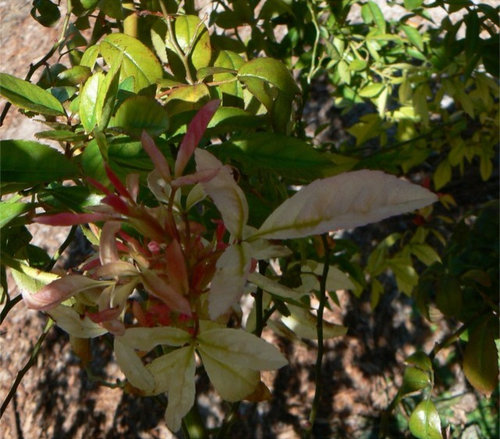White leaves on Weeping China Doll - Alfalfa??
g-in-fl
11 years ago
Related Stories

GARDENING GUIDES8 Plants for a Deliciously Fragrant Fall Garden
Scent the autumn air with the perfume of caramel corn, honey and spices by adding these intoxicating plants to your landscape
Full Story
DECLUTTERINGEscape the Inheritance Trap: What to Do With Sentimental Pieces
Too meaningful to toss but too hideous, precious or unusual to display? These ideas can help
Full Story
TASTEMAKERSThe Seduction of Reduction
Go on a design detox for an emotional and spiritual uplift. 'The Inspired Home' shows you how
Full Story
KIDS’ SPACES8 Tips for Peaceful Bedroom Sharing With Baby
Enjoy better sleep, neatness and enough space for everyone’s things with these shared-room strategies
Full Story
DECORATING GUIDESLessons in Living Comfortably: Embrace the Scratches and Dents
When you celebrate wear and tear, you send a message that your home is designed for relaxation
Full Story
DECORATING GUIDES10 Popular Home Design Trends — Timely or Timeless?
Weigh in on whether these of-the-moment decorating elements will have staying power or become a memory of these times
Full Story
LANDSCAPE DESIGNThe 7 Best Plant Types for Creating Privacy and How to Use Them
Follow these tips for using different kinds of plants as living privacy screens
Full Story
MOST POPULARThe Right Way to Test Paint Colors
Here are 5 key steps to take to ensure you're happy with your wall paint color
Full Story
HOLIDAYSHouzz Call: Show Us Your Christmas Tree!
How lovely are your branches? Post a picture and share your stories
Full Story









roseseek
g-in-flOriginal Author
Related Discussions
China Doll Pruning
Q
Has my alfalfa tea gone bad?
Q
China Doll, Cl. or Otto Linne
Q
weeping china doll rose trees
Q
jaxondel
roseseek
malcolm_manners
jerijen
Tessiess, SoCal Inland, 9b, 1272' elev
roseseek
strawchicago z5
strawchicago z5
strawchicago z5
Tessiess, SoCal Inland, 9b, 1272' elev
roseseek
strawchicago z5
g-in-flOriginal Author
roseseek
sherryocala
floridarosez9 Morgan
g-in-flOriginal Author
strawchicago z5
strawchicago z5
g-in-flOriginal Author
sherryocala
strawchicago z5